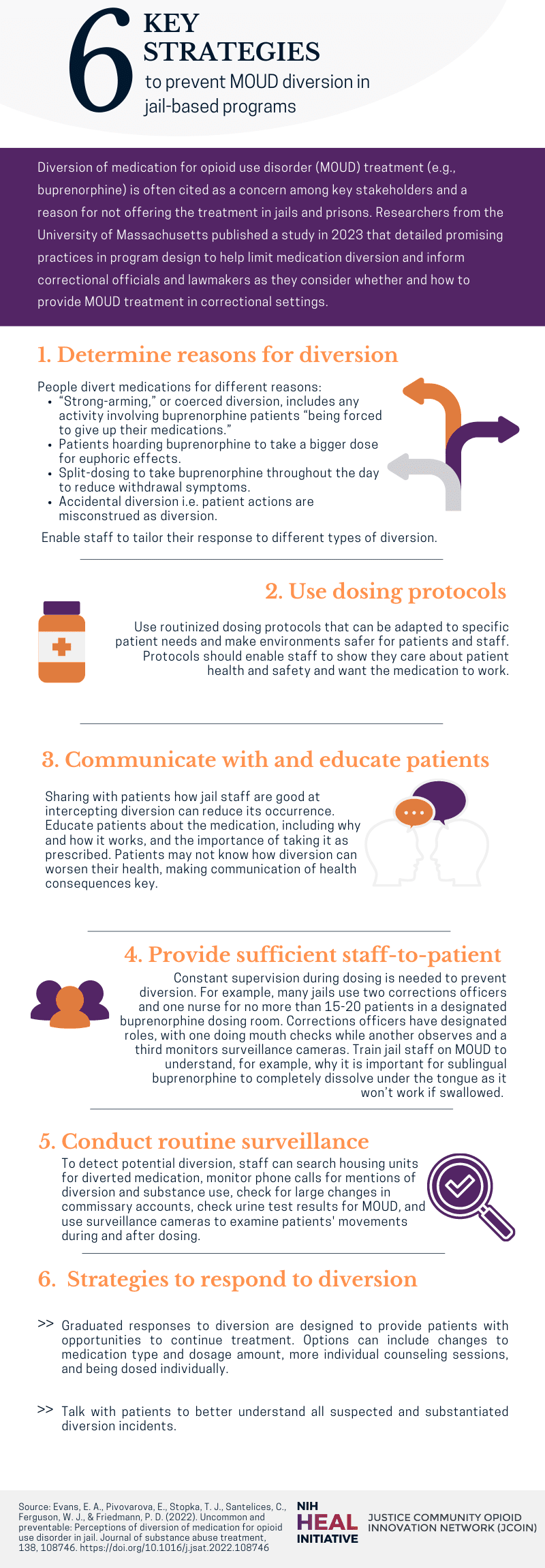Six Strategies to Prevent MOUD Diversion in Jail-Based Treatment Programs
Findings from JCOIN’s Massachusetts Clinical Research Center
Diversion of medication for opioid use disorder (MOUD) treatment is often cited as a concern and a reason for not offering the medications in jails and prisons. Researchers from the University of Massachusetts published a study in 2023 that detailed promising practices in program design to help limit medication diversion. The study also details guidance for corrections and lawmakers as they consider implementing MOUD treatment in correctional settings.
Led by Drs. Elizabeth Evans, Ekaterina Pivovarova, Thomas Stopka, Claudia Santelices, Warren Ferguson, and Peter Friedmann, the study identified six key diversion prevention strategies based on feedback from jail-based MOUD program staff. The recommendations were gathered from semi-structured one-on-one interviews and focus groups with senior administrators, correctional officers, and behavioral health and clinical staff in seven Massachusetts jails. Through these conversations, participants shared effective approaches utilized to prevent buprenorphine diversion or have been shown to lower the number of diversion attempts in their respective jails. The strategies include:
-
Determine reasons for diverting medications which enables the staff to tailor their response to different types of diversion (e.g., coerced, euphoria, split-dosing, and accidental)
-
Use routine but flexible dosing protocols that can be adapted to patients’ needs.
-
Communicate with and educate patients about how jail staff are effective at intercepting and preventing diversion as well as medication safety.
-
Provide a sufficient staff-to-patient ratio to ensure adequate and constant supervision during MOUD initiation.
-
Conduct routine surveillance to detect potential diversion, including searching housing units, monitoring phone calls for mention of diversion or substance use, and checking urine testing results.
-
Develop strategies to respond to diversion that provide patients opportunities to continue treatment, such as changes to medication type, dosage amount, individual counseling sessions, and being dosed individually.
This summary is based on the findings from the following publication:
Evans, E. A., Pivovarova, E., Stopka, T. J., Santelices, C., Ferguson, W. J., & Friedmann, P. D. (2022). Uncommon and preventable: Perceptions of diversion of medication for opioid use disorder in jail. Journal of Substance Abuse Treatment, 138, 108746.
https://doi.org/10.1016/j.jsat.2022.108746


